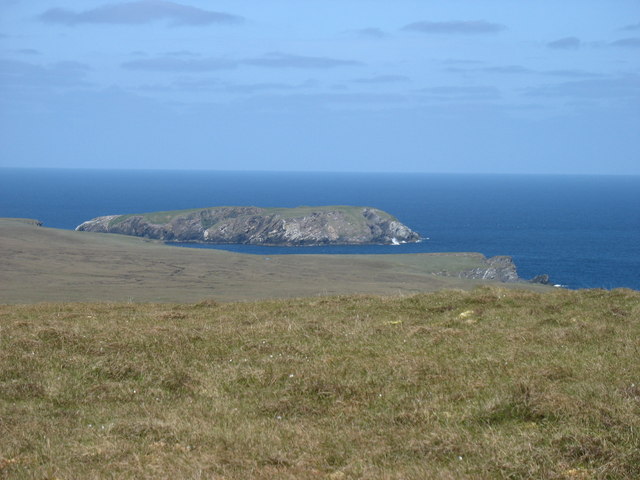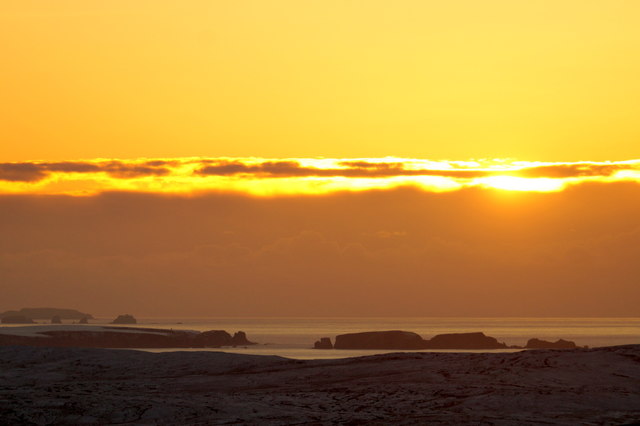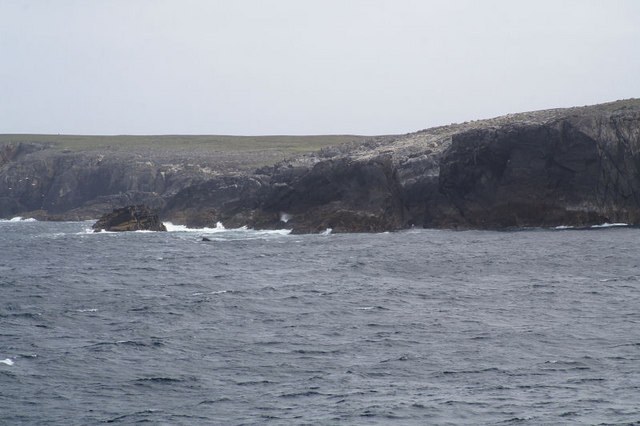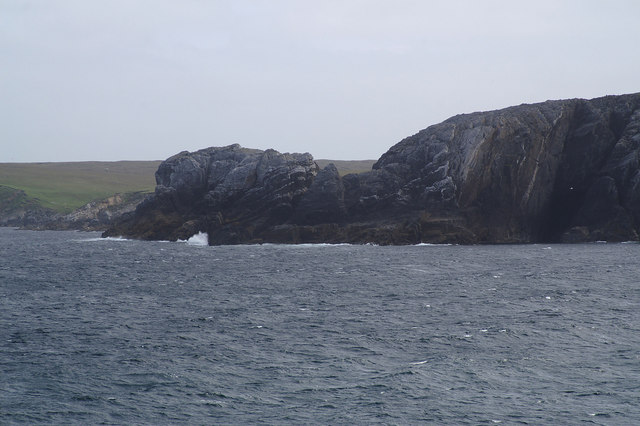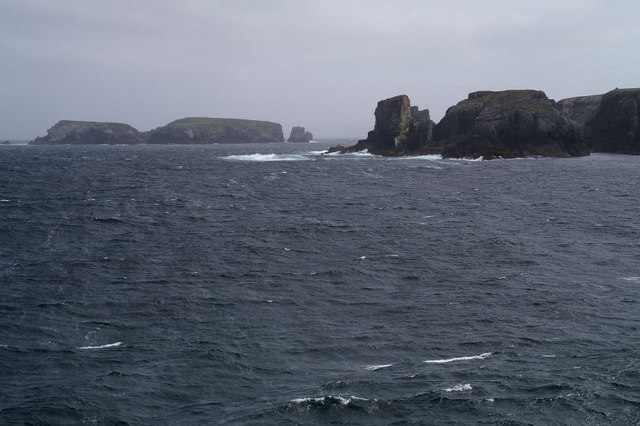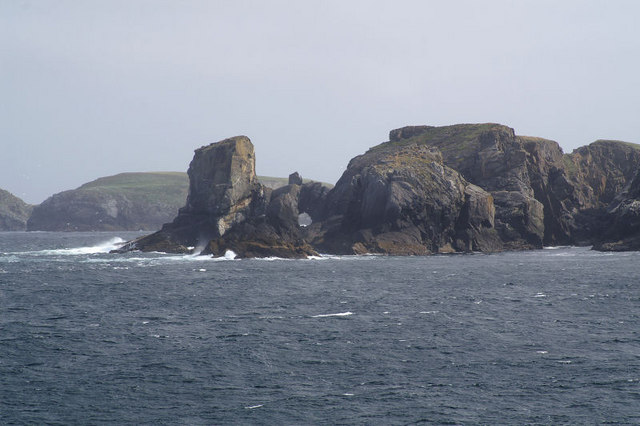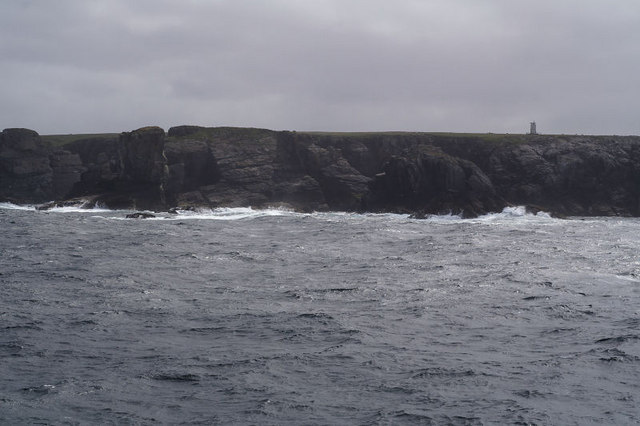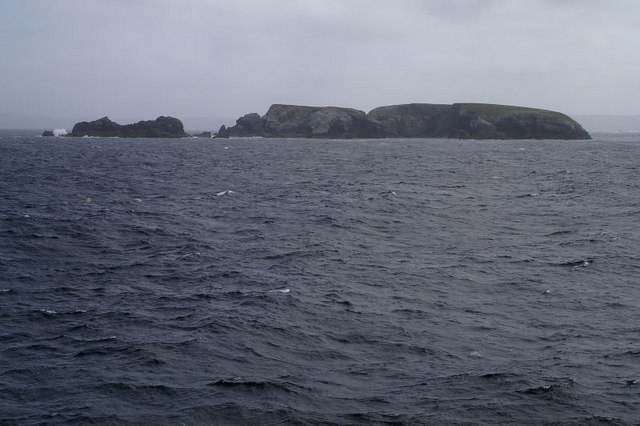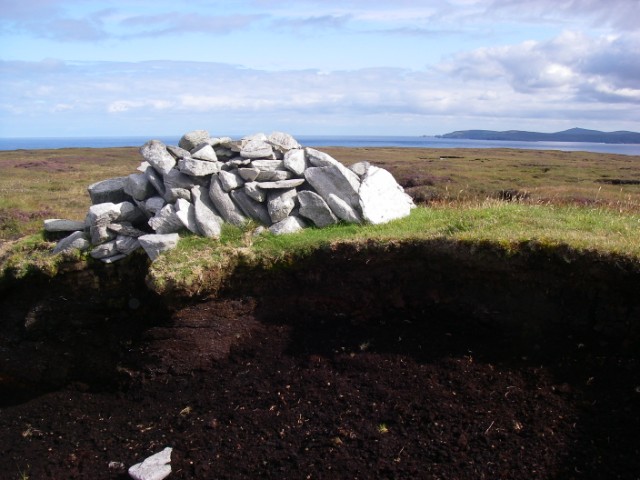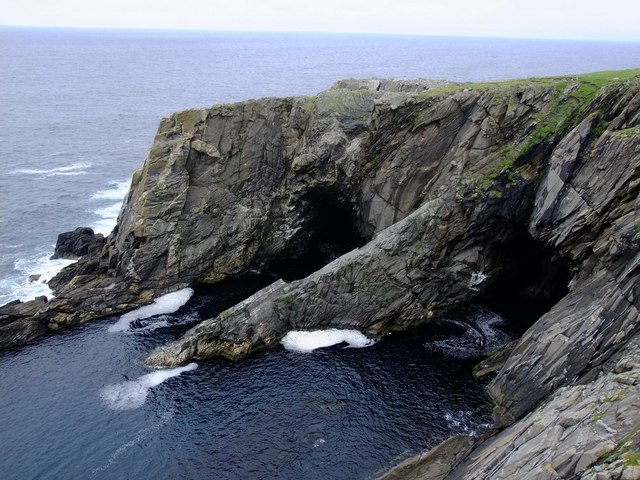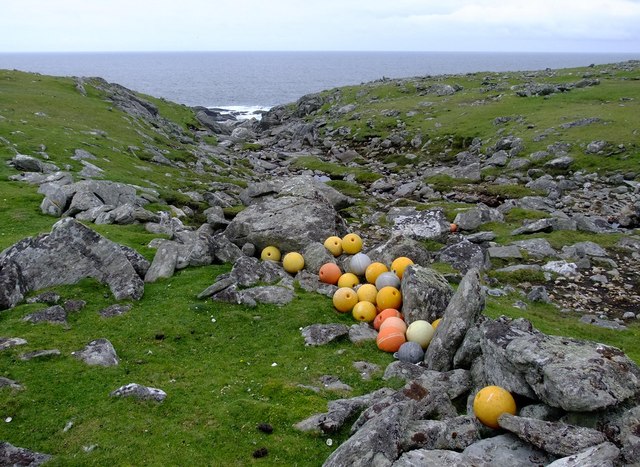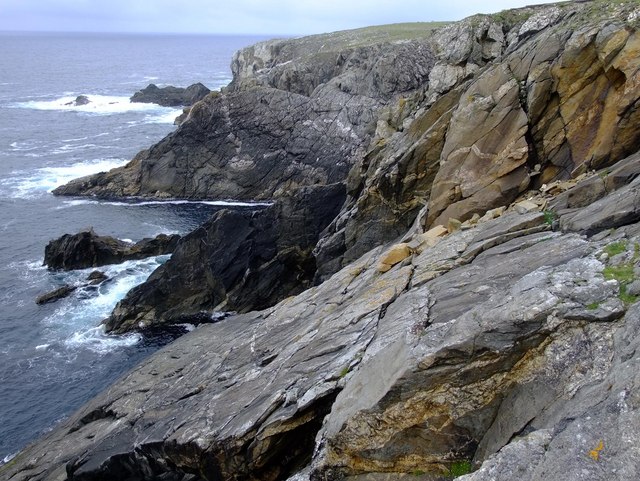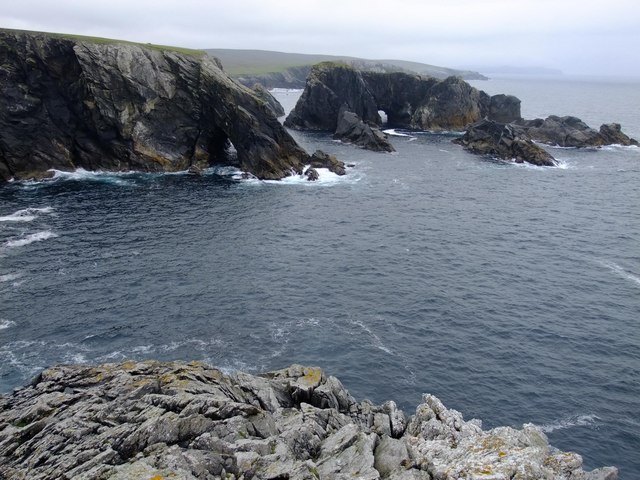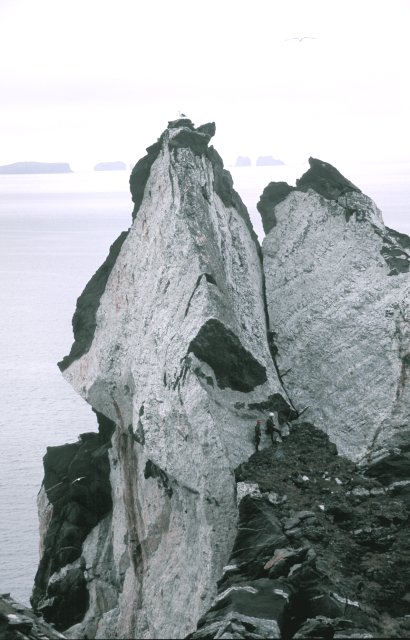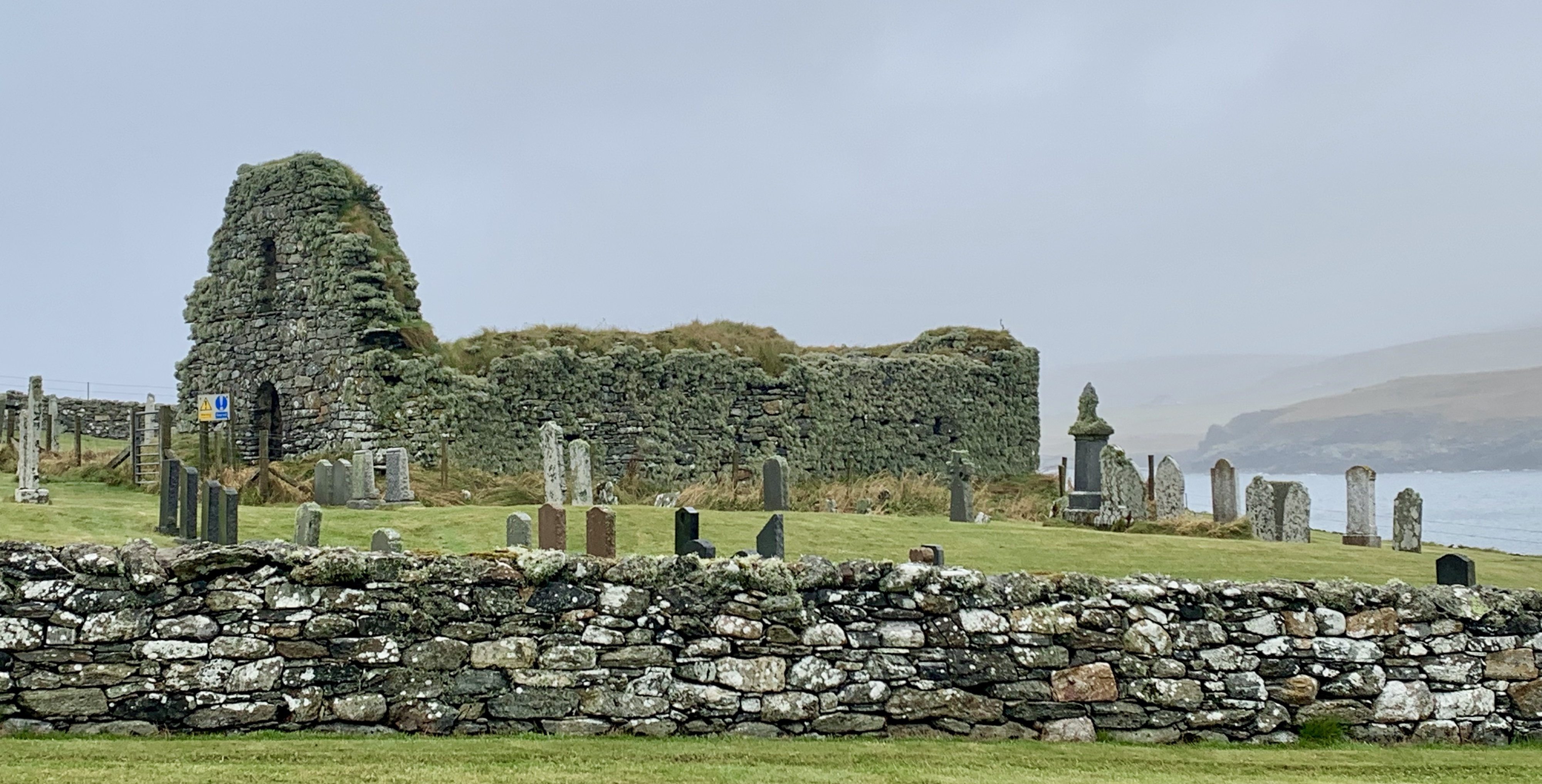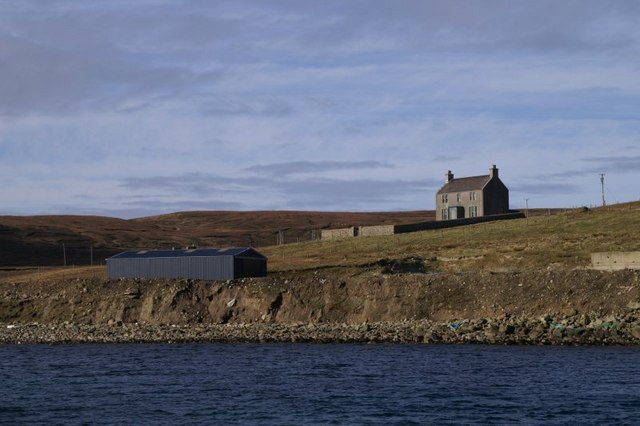Geo of Vigon
Coastal Feature, Headland, Point in Shetland
Scotland
Geo of Vigon
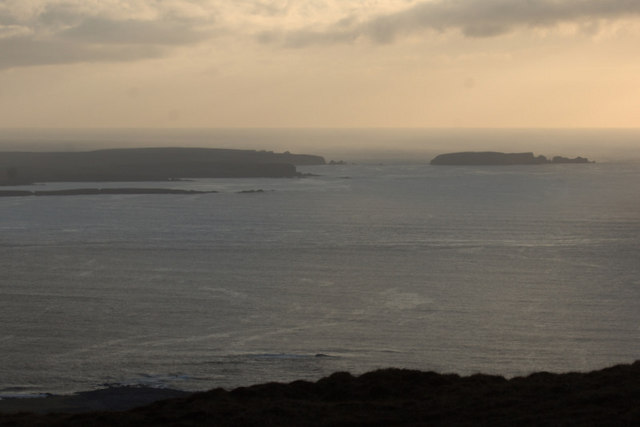
Geo of Vigon is a prominent coastal feature located in the Shetland Islands, Scotland. It is a headland that extends into the North Sea, forming a distinctive point along the rugged coastline. The name "geo" is derived from the Old Norse word "gjá," meaning a narrow inlet or ravine, which accurately describes the geological formation of this feature.
The Geo of Vigon is characterized by its steep cliffs and rocky shoreline, which are composed of layered sedimentary rock formations. These cliffs rise dramatically from the sea, offering breathtaking views of the surrounding landscape. The rocks display various colors, ranging from dark gray to reddish-brown, highlighting the diverse geological history of the area.
This headland is a popular spot for nature enthusiasts and photographers due to its stunning scenery and abundant wildlife. Seabirds, such as puffins, fulmars, and gannets, can often be observed nesting on the cliffs, while seals and otters can be spotted in the surrounding waters.
The Geo of Vigon is also of historical and archaeological significance. The remains of an Iron Age broch, a circular stone tower, can be found nearby, providing evidence of human settlement in the area dating back thousands of years.
Access to the Geo of Vigon is possible via a coastal footpath, allowing visitors to explore the headland and enjoy its natural beauty. However, caution is advised as the cliffs are steep and can be dangerous, particularly during inclement weather conditions.
In conclusion, the Geo of Vigon is a striking coastal feature that showcases the geological diversity and natural splendor of the Shetland Islands. Its towering cliffs, abundant wildlife, and historical significance make it a must-visit destination for those exploring the region.
If you have any feedback on the listing, please let us know in the comments section below.
Geo of Vigon Images
Images are sourced within 2km of 60.719361/-1.1195012 or Grid Reference HP4804. Thanks to Geograph Open Source API. All images are credited.
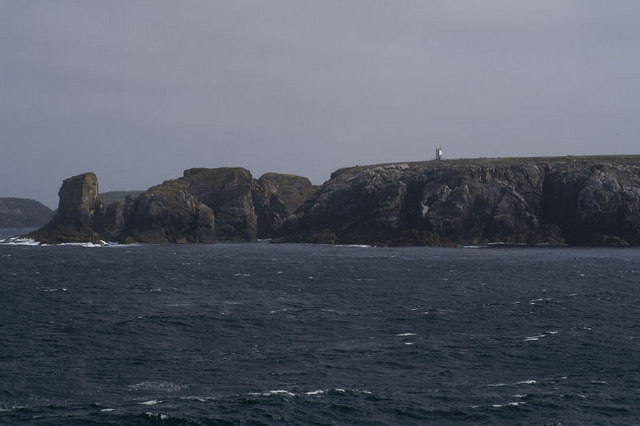
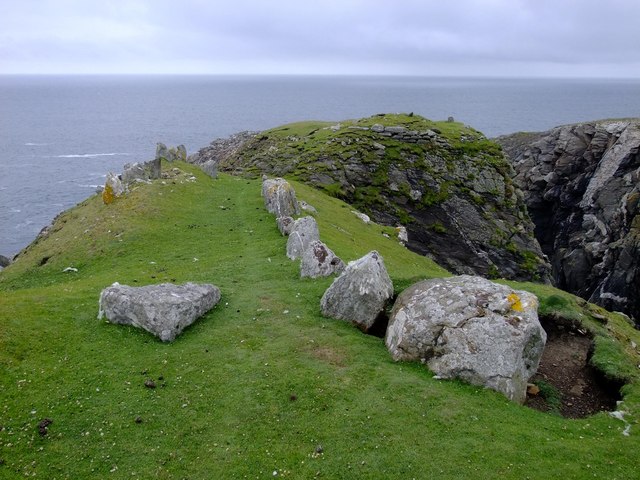
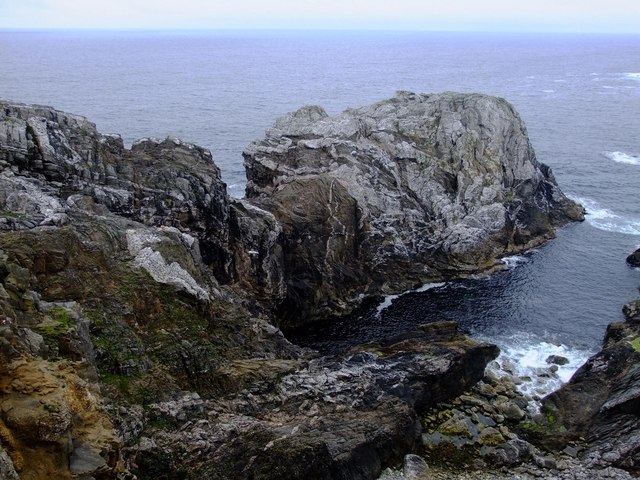
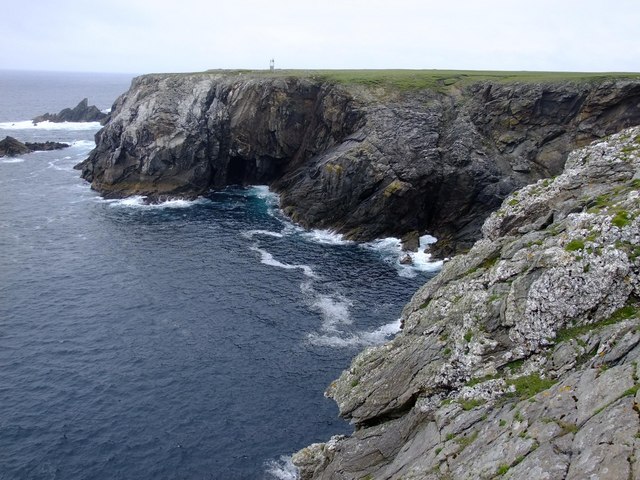
Geo of Vigon is located at Grid Ref: HP4804 (Lat: 60.719361, Lng: -1.1195012)
Unitary Authority: Shetland Islands
Police Authority: Highlands and Islands
What 3 Words
///theory.calibrate.greeting. Near Gutcher, Shetland Islands
Nearby Locations
Related Wikis
Gloup
Note: Gloup is common in Scottish placenames referring to a sea jet. Gloup is a village in the far north of the island of Yell in the Shetland Islands...
Gloup Holm
Gloup Holm is an islet in the Shetland Islands, lying to the north of Yell. == Geography and geology == Gloup Holm is near to the part of Yell called North...
Cullivoe
Cullivoe (Old Norse: Kollavágr - Bay of Kolli), is a village on Yell in the Shetland Islands. It is in the north east of the island, near Bluemull Sound...
Bluemull Sound
Bluemull Sound is the strait between Unst and Yell in Shetland's North Isles. A ferry service crosses it regularly. Cullivoe is on the Yell side, and the...
Ern Stack
Ern Stack is a sea stack off Yell, in Shetland, Scotland. The word "ern" means an eagle (it is a cognate of, for example, Swedish "örn"), and it is said...
St Olaf's Church, Unst
St Olaf's Church, Unst is a ruined medieval church located on the island of Unst, in Shetland, Scotland, UK. The church was built in the Celtic style,...
Gutcher
Gutcher is a settlement on the northeast coast of Yell in the Shetland islands. From here, rollon/roll off ferry services to Belmont on Unst and Hamars...
Brough Holm
Brough Holm is a small island off Unst, in the North Isles of Shetland. It is off Westing, which as the name implies is on the west coast of Unst. The...
Nearby Amenities
Located within 500m of 60.719361,-1.1195012Have you been to Geo of Vigon?
Leave your review of Geo of Vigon below (or comments, questions and feedback).
